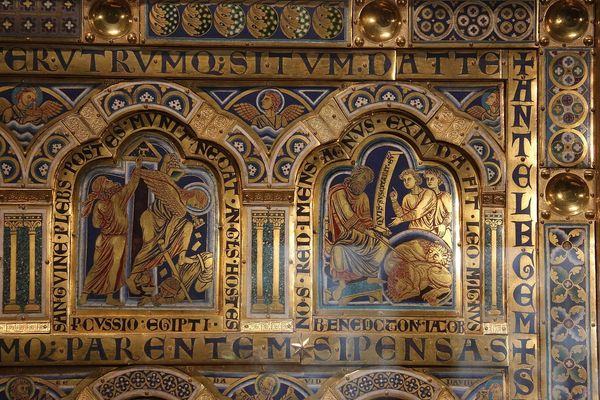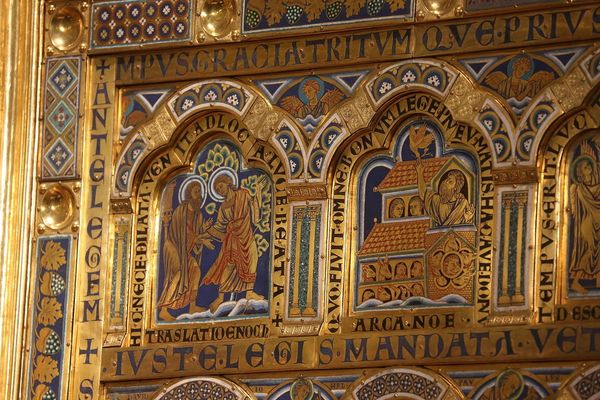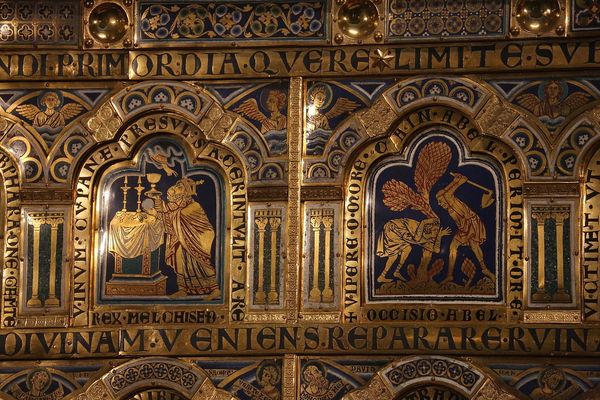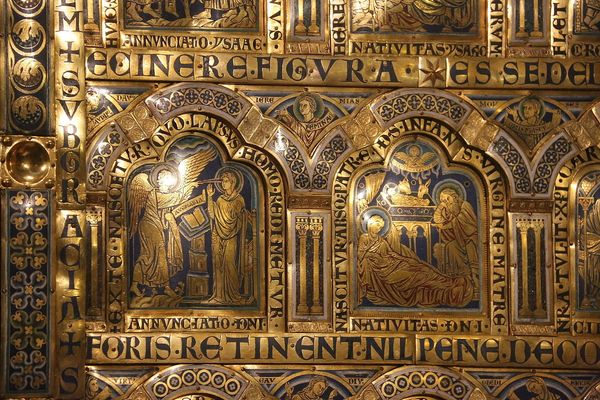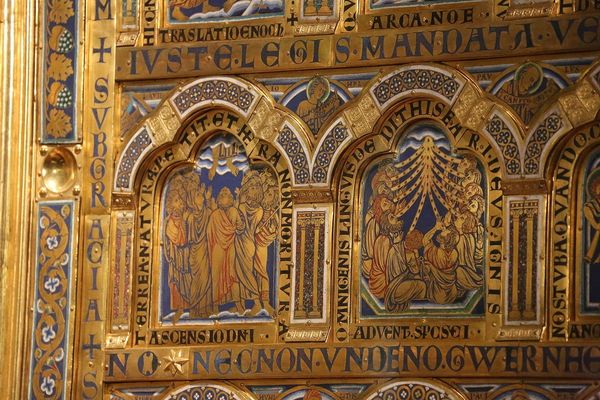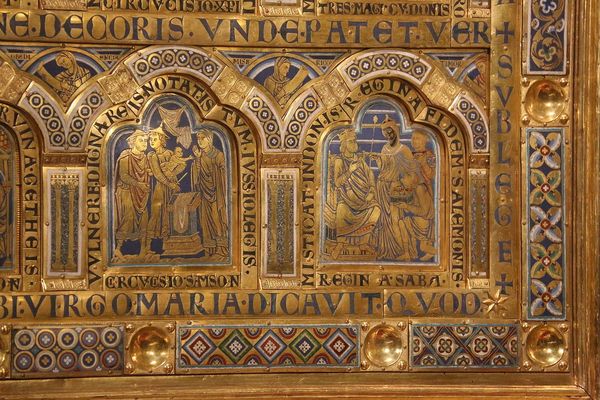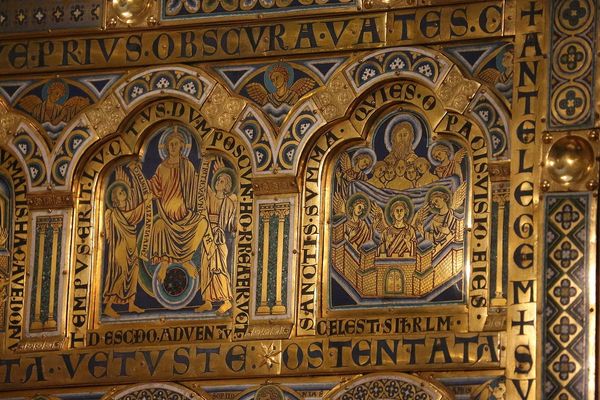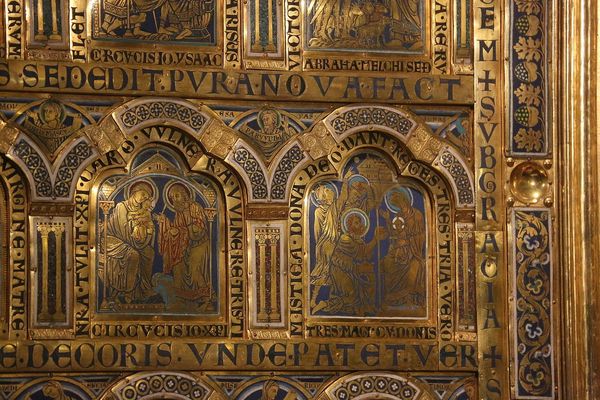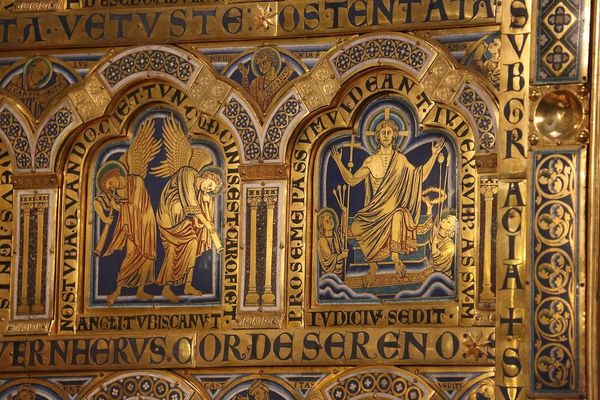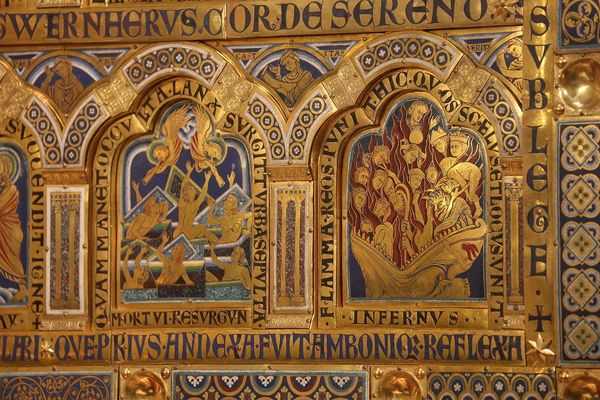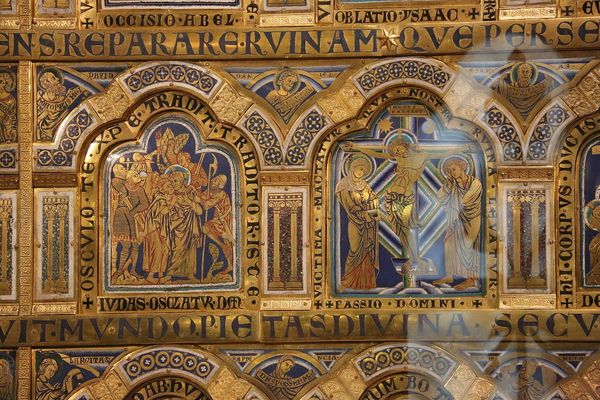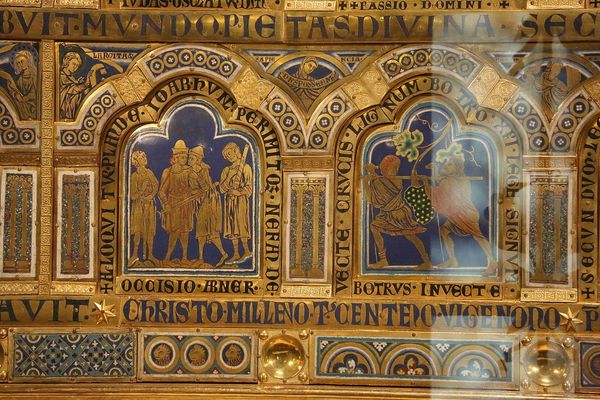
carving, tempera
#
byzantine-art
#
medieval
#
carving
#
tempera
#
holy-places
#
figuration
#
historic architecture
#
traditional architecture
#
history-painting
Copyright: Public domain
Curator: Here we have a section of the Klosterneuburg Altar, created by Nicholas of Verdun around 1181. It's a stunning example of medieval craftsmanship, combining tempera and carving techniques. Editor: Oh, it's radiant! The gold is just overwhelming. It feels so intricate, like staring into a meticulously crafted jewel box. You can almost smell the beeswax and incense just by looking at it, don't you think? Curator: I'm fascinated by how the material processes speak to the societal functions it served. The use of expensive materials like gold suggests a significant investment of labor and resources, likely controlled by the Church, used to create something intended to inspire awe and communicate complex theological concepts to a largely illiterate audience. It's visual rhetoric at its finest. Editor: Exactly! Like a golden comic strip. Visually sumptuous yet also narrating tales central to faith. It feels both opulent and, at the same time, quite human, even naive. It feels deeply connected to the people who made and viewed it. Look at the figures; there’s something both iconic and oddly personal in the depiction of Adam and Eve. It’s stylized, of course, but hints at vulnerability. Curator: The division of labor inherent in crafting this piece is staggering, really. From the mining and refining of metals to the preparation of the tempera paints and the physical act of carving, so many hands would have been involved. And consider the organization of those laborers! Editor: True. Each scene carefully framed, with such deliberation, almost feels like a miniature stage, doesn’t it? All those biblical dramas played out in gold. It's fascinating to imagine the altar gleaming under candlelight, transforming into a living tableau. Makes you think of theater design. Curator: And remember the altar's function as a focal point for communal ritual and performance, binding the community together through shared belief and practices. We shouldn't just focus on its visual properties; we have to situate this object in its social and economic framework. Editor: Absolutely. The altar radiates something that goes beyond materials, to connect it all together into something beyond craftsmanship and into faith itself. Seeing that faith still held within its very form feels deeply affecting to this day.
Comments
No comments
Be the first to comment and join the conversation on the ultimate creative platform.
